A True Life Built is a living photo essay on starting over and building a truer life. It’s for anyone, at any age, who is finding the courage to begin again. Subscribe for free posts.
My ex-husband and I had never been to Paris together. I was staying in the apartment of mutual friends, who were out of town but offered to leave me a key. I would find it in a broom closet, next to the door with the elephant head knocker. I was so focused on these directions that I never considered what might be waiting inside.
The door opened into a small flat with stacks of books and art supplies. Nothing matched, but everything fit. A wall of shelves held treasures from their travels—and three items lifted straight from my married life. A poster of donkeys. A yellow basket. My husband’s photo book. They didn’t belong in this quiet apartment on the outskirts of Paris. I had owned these same items and their presence was a portal to the past.
I bought the donkey poster on a trip to Lamu, an island off the coast of Kenya. There were no cars, only donkeys clopping down the narrow stone streets. At dawn, I slipped out while my husband slept and wandered with my camera. As the fishermen shook out their nets, the donkeys headed to the jetty to collect their wares. They hauled mangoes and sodas on their backs in woven palm sacks. When their work was done, they idled in the shifting shade of palm trees until the evening call to prayer drifted down the beach. As one, they pricked up their ears and headed for home.
In the early days, my husband and I had wandered these streets together. On our first trip, he talked the local hotel into a trade: we’d take new food photos and they’d comp us a room. While I photographed towers of lobster, he held the lights and helped me set up the shots. All day, we worked as a team doing what we loved, and at night we collapsed on a seaside patio to sip cocktails under a roof of bougainvillea. The flowers swayed like streamers in the breeze. Ice clinked in highball glasses. We sipped the tart drinks and dreamed of the creative life we’d live together. Lots of hotels needed new photos; we could travel the country and take them together. But as the years went by, this dream faded. First we stopped taking photos together, then we stopped seeing each other at all. By the time I bought the poster, I had hundreds of photos of Lamu and none of the two of us there.
Around the same time, I bought the yellow basket from a Nairobi roadside stand for my husband’s new home office. I wove through the piles, picking up one basket after the other, hunting for the perfect yellow. It was my husband’s favorite color, or perhaps it still is; tenses are tricky in trips to the past. The basket was the finishing touch for his creative studio, with big screens for video editing and a wall of closets for his photo supplies. Finally, a place to store all his photo prints! Back in college, he’d stumbled on a trove of old family photos, which he’d preserved in a film and then in a book. The project was my husband’s Roman Empire. For ages, I came home from work to find him and a photo editor pouring over mountains of prints.
I tried to be supportive of his projects and mostly succeeded. I celebrated when his film won awards at festivals and his book finally launched. Yet deep down, where I didn’t like to look, I harbored a quiet grudge: My steady paycheck paid the bills while he followed his passion. In my home office across from his, I led a team of creatives for a nonprofit, managing the people who wrote the words and took the photos. The more I advanced in my career, the less I created myself. But I was a person who collected gold stars, so I climbed the ranks and cashed the checks and envied my husband’s freedom.
Now the book stared at me from its seat on the shelf. It had some nerve, barging in on my trip to Paris like this. This was my first summer off work in 10 years and my first vacation as a single woman in almost 20. I was on sabbatical from my job and working my way through The Artist’s Way, the Bible of blocked creatives. I was here to do morning pages and eat my weight in baguettes, not to wallow in the past.
I ignored the book and flopped down on the couch to scroll on Facebook. It opened to my Brooklyn BuyNothing group, a hyper-local community that lets neighbors give away things they no longer need. I skimmed it for its comedy value, part of a competition with my friends to see whose block had the quirkiest listings. Our current favorites were an Ikea bag full of plaster of Paris teeth (modeled after the poster’s daughter), accessories for a rat to wear in costume parade (with a photo of said rat), and a used dildo (listed as a “found sculpture,” to the delight of the comment section).
At the top of my feed was a post by a woman looking to rehome a live mouse caught in her kitchen (currently named “mousey,” but it could be renamed.) I took a screenshot to send to my friends as further evidence of Brooklyn’s curious rodent obsession and then paused at the poster’s name. Why did it sound familiar? It took me a minute to place her as my husband’s photo editor. Her name was on the book I was currently ignoring. I had forgotten that she lived in my neighborhood, or even that she existed at all, yet here she was at the top of my feed. The Artist’s Way calls this synchronicity, the idea that coincidences happen for a reason.
I set down my phone, pulled my husband’s book from the shelf, and began to read. His dedication thanked me for “living with this project, patiently, for 14 years, and for shaping the earliest raw material of my film. And for helping me shape my experience on this project into a career.” The sentences socked me in the stomach with a one-two punch. It hurt because there was love there, once. It hurt because I spent 14 years putting his creative projects ahead of my own.
Why hadn’t I invested in my own art? I enjoyed photos as much as he did and I worked with words for a living. During our divorce, it was easy to blame him for keeping the cameras. When work was busy, it was easy to blame my job for the lack of time. Only now, in a moment with no partner and no work, did my own choices swim into clearer focus. I was a shadow artist, drawn to creative people and spaces, but afraid to claim art as my own. I wanted to spend my days making things instead of taking meetings. I wanted my own colorful office and big creative project. I boxed up my dreams and handed them to him as a present, neatly wrapped in paper and ribbon and resentment.
I slammed the book shut and wept for all the ways I kept myself small. My photos are blurry, my eyes red, the pain raw. But when the shock ebbed, I reached for my notebook, flipped open to a blank page and began to sketch. In thick, rough lines, the shelf appeared: the nuzzling donkeys, the gold basket, the book. I hadn’t drawn since elementary school and the shapes were crude. I was drawing as children do, on instinct, to find the outlines of themselves: this is me, this is my room, this is the monster under my bed.
As I sketched, the sun slipped into the window. I sat in the pool of light and smiled at the timing. Yes, the universe seemed to say, more of this, keep going. What would you make if you were not afraid?
I want to learn how to draw and paint, I responded in the notebook, but most of all I want to write. I want to chronicle this process of becoming new. This answer caught me by surprise. Besides some youthful blogging that was better lost to time, I hadn’t written anything in ages. The thought had been biding its time, hovering at the edges of my photos. Now, in the quiet Paris apartment, it stepped out into the light.
One of the unexpected joys of starting over has been hearing from others on similar journeys. If something resonates with you, I’d love for you to leave a comment, drop me an email or share a post with a friend!
Liz is a freelance writer based in Brooklyn. She is working on her first book. lizmstudio.com.
Creative resources:
I first did The Artists’ Way in a group led by
, and it was the nudge I needed to start this Substack (thanks to ). Two members of our group got sober. Three of us quit our day jobs. One left her law firm to become a musician and has a one-woman show opening in NYC on April 2.One of the key practices to get unstuck is to write morning pages—three pages a day on literally anything. (See WTF Are Morning Pages by
.) I aim for a page a day, and it clears the random chatter out my head so I can hear myself think.My favorite creative community right now is Creative Mornings. They have free monthly talks in loads of cities and weekly clubs in New York. In Writeshop, we get together on Mondays before work twice a month and spend an hour writing anything, whether that’s a poem, thank-you note, or a to-do list. It’s the best way to start the week. In PhotograPals,
hosts a photo walk (and publishes photo essays here).I also love the low-key writing events hosted by
(full list here) and the readings by (next event here), which features authors reading from their new books, paired with a small plate and cocktail inspired by the passage. Finally, Shut up and Write has free writing events in dozens of cities, including an event every day of the week in NYC (Thursdays at 6 p.m. at Brooklyn Public Library).
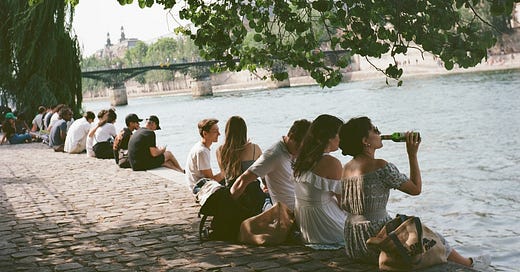


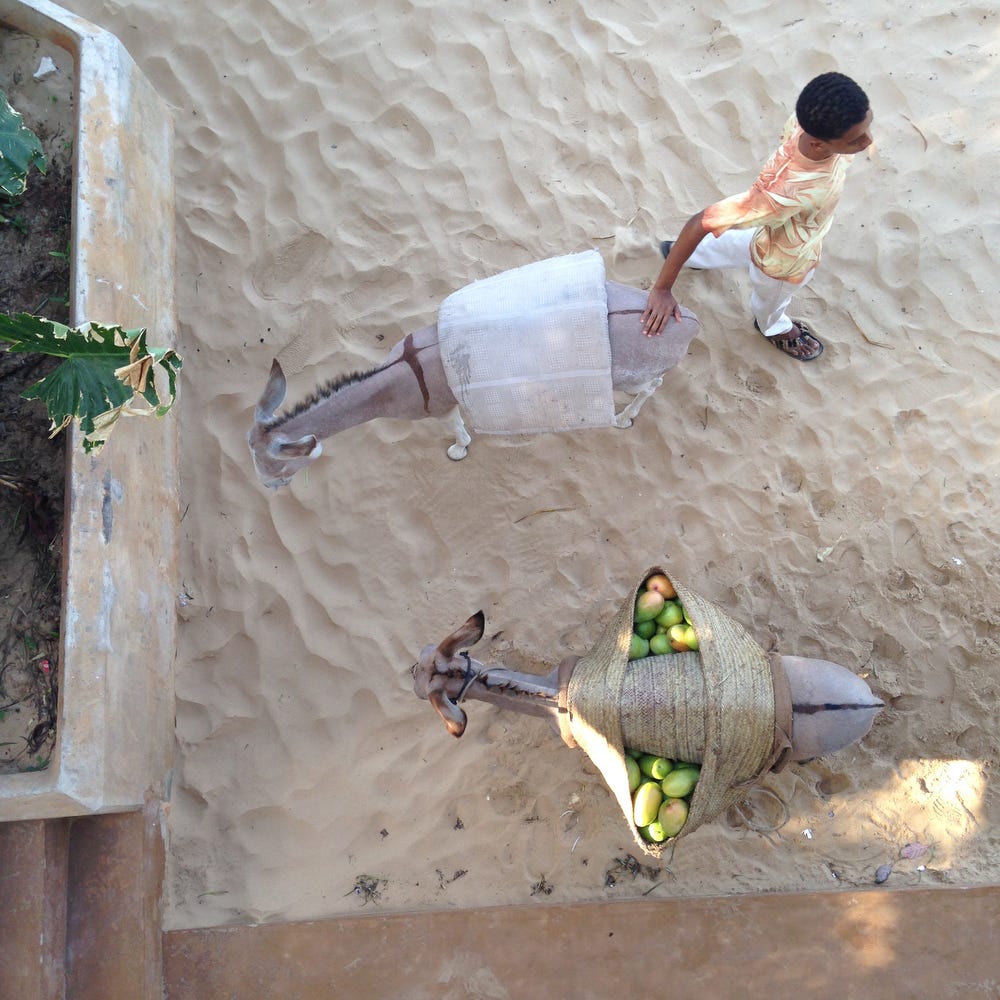
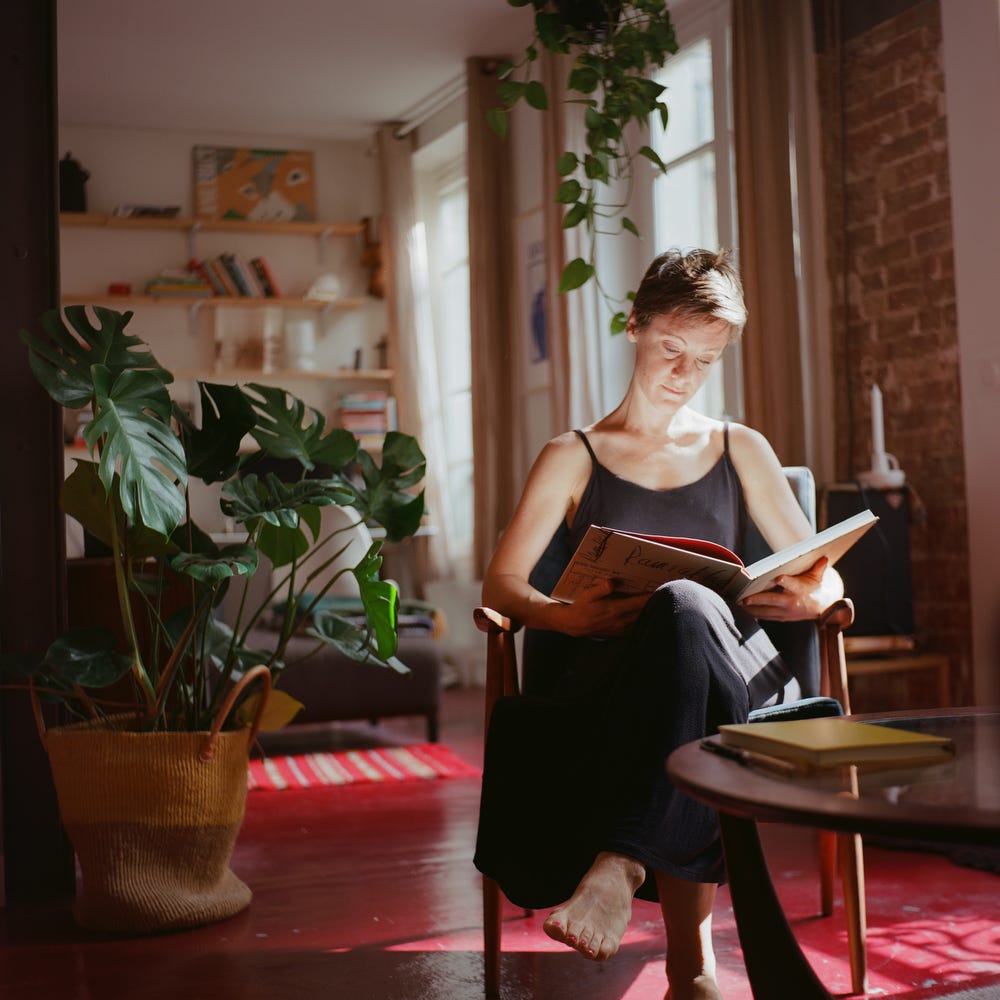
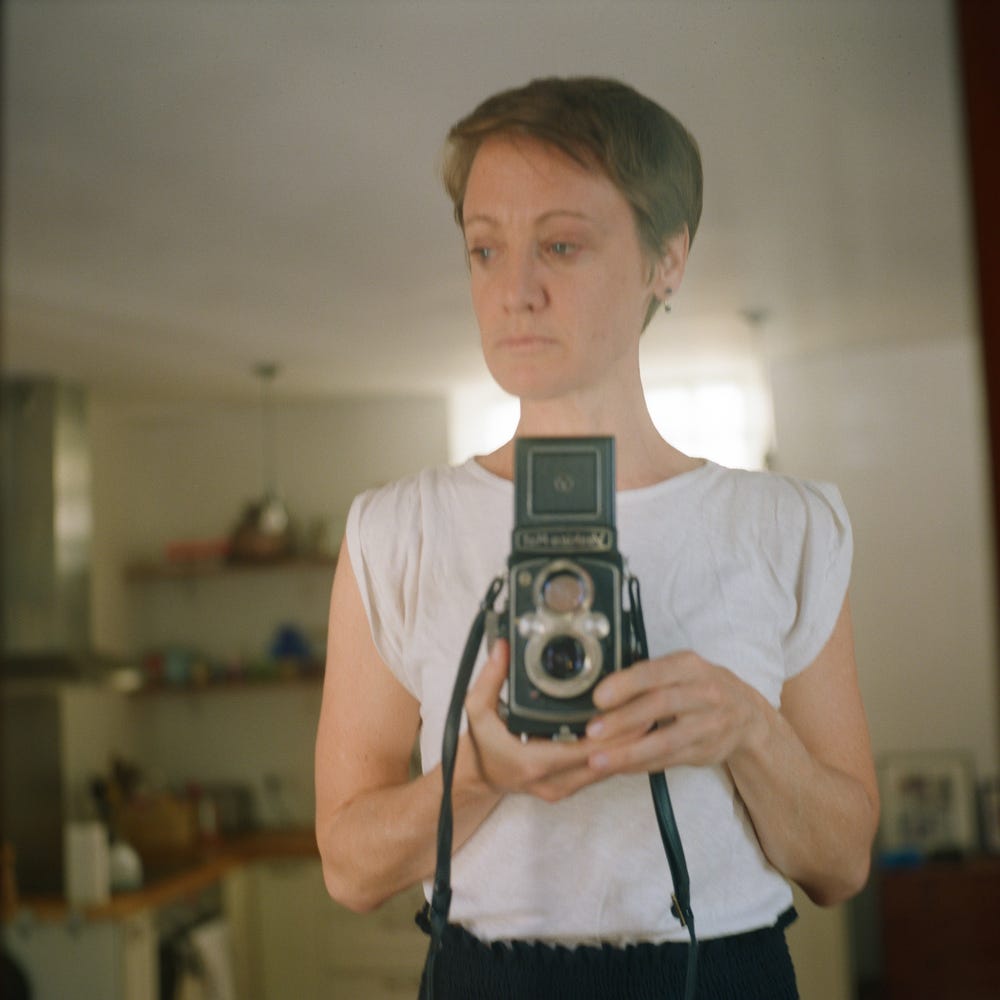
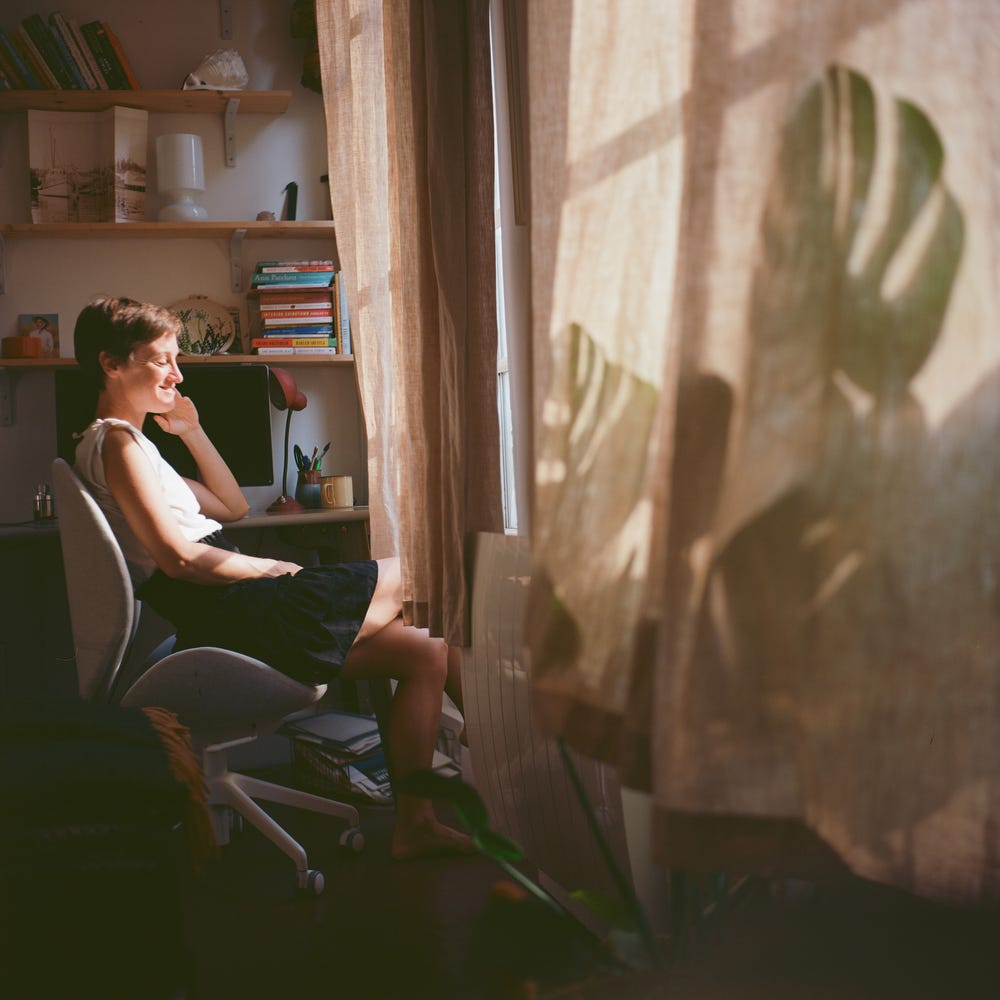
This is exquisitely written and illustrated, as always, Liz! It’s great to hear from you. And the best part of the whole story: “Liz is a freelance writer based in Brooklyn. She is working on her first book.”
And I'm so happy you started sharing your work here, Liz. That Artist's Way group was everything!! I'll be back at writeshop sooooon